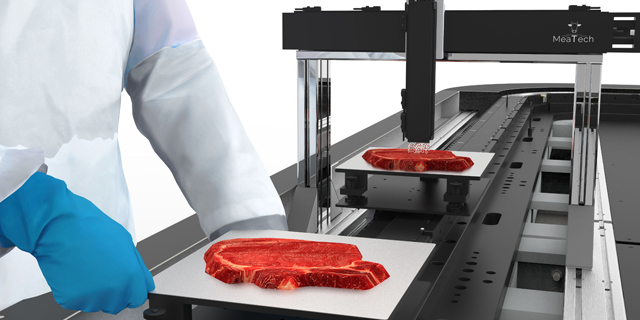A research partnership between two Chinese institutions has produced pork meatballs in a lab that is higher in protein and lower in fat than those made from regular meat, according to a report by South China Morning Post (SCMP).
Nuggets made from lab-grown chicken meat are seen during a media presentation in Singapore, the first country to allow the sale of meat created without slaughtering any animals, on December 22, 2020.
Lab-Cultured Meat
An excellent substitute for obtaining animal foods in a way that is far more sustainable is lab-cultured meat. According to estimates, growing meat in a lab uses significantly less land than conventional animal farming does and can significantly reduce the greenhouse gas emissions that go along with it.

The first cultured beef products were certified for sale by the Singapore Food Agency in December 2020, and similar approvals are also anticipated in other nations.
Researchers must cultivate a lot of animal cell material in the lab to produce cultured meat. More significantly, cultured meat must taste and feel like real meat.
The Process
Before combining them in a 3D-printed mold, researchers from Tsinghua University and Nanjing Agricultural University in China cultivated fat and muscle cells separately in the lab. Then, they utilized an enzyme to make the centimeter-sized meatballs.
The cells were developed on an edible, three-dimensional micro-carrier comprised of porous gelatin. The micro-carrier also acts as a framework for cell growth, and the researchers discovered that this cell growth happened more quickly.
The researchers also discovered that their micro-carrier produced a 20-fold increase in the same time frame as their predecessor trials, which had 10-fold expansion rates over a seven-day timeframe.
The researchers also compared the nutritional value of shizitou, a well-known Chinese meatball meal, and the researchers’ cultured meat. According to their analysis, the cultured meatballs had 70% protein, 4% fat, 6% carbohydrate, and 5% important minerals such as iron, zinc, and calcium.
Even while it had fewer calories, the store-bought meatball dish had only one-fifth as much protein and three times as much fat.

The researchers’ techniques also make it simple to produce these meatballs in large quantities. Before being coupled with the unique enzyme and then shaped to produce meatballs, the two cell types employed in the procedure can be cultured in different bioreactors at scale.
Meatballs or sausages are often easier to produce than lab-cultured beef, which has to resemble the real thing in order to be substituted. The Nanjing Agricultural University research team didn’t create their first cultured pork until 2019. The researchers managed to create 1.7 ounces (50 grams) of the meat in just 20 days a year later.
The recent study could have found a novel way of mass producing lab-grown meats in the future.











